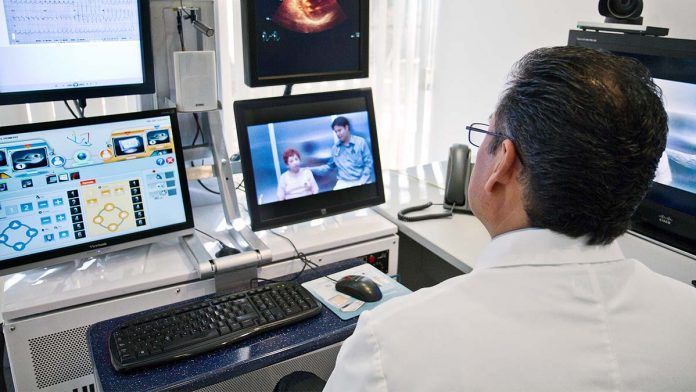58% female doctors opted for telemedicine while 50% younger doctors adopted the practice in June-July 2020 in India, study finds.

New Delhi: More of the younger and female doctors adopted telemedicine or online consultations as a practice in India compared to male and older doctors in the June-July period this year, reveals a new study.
A joint study by India-based healthcare research organisation Strategic Marketing Solutions & Research Centre (SMSRC) and Purdue University’s Krannert School of Management in the US found that 50 per cent younger doctors took up telemedicine in India, while only 44 per cent of their older counterparts did so.
Furthermore, at 58 per cent, female doctors opted for online consultations more than male doctors (44 per cent).
The study, published Sunday, sought to show the impact of the Covid-19 pandemic on medical practices. It surveyed 2,116 physicians with key specialisations from 80 cities and towns across India.
The results show “a significant shift from physical in-clinic visits to telemedicine”, the study noted.
The study suggested that fewer older doctors shifted to telemedicine due to “greater status quo bias, a cognitive bias where people are resistant to change and want to continue in the current way of doing things”, adding that “younger physicians are more adaptive to new approaches and methodologies and thus their adoption of telemedicine in greater proportion is reasonable”.
Dr Wreetabrata Kar, assistant professor at Krannert School of Management, said, “Greater proportion of female physicians moving toward telemedicine could be explained by greater risk aversion and predisposition to conservative decision making as opposed to their male counterpart.”
Kar added, “Further, the nation-wide lockdown, across an extended period of time, and consequently absence of any domestic help, could have also relegated much of the domestic chores to females more so than to males, thereby restricting the former to adopting telemedicine in greater propensity.”
Highest adoption of telemedicine in South India
Across India, southern states saw the highest adoption of telemedicine in the country, at 62 per cent. North India’s adoption rate was 50 per cent and West India stood at 52 per cent. Physicians in East India marked the lowest adoption rate at 30 per cent.
The study also showed 52 per cent metro-based doctors shifted to telemedicine, compared to 44 per cent doctors in non-metropolitan areas.
Only about 11 per cent of the telemedicine sessions took place through a practice management software (PMS), while most, about 82 per cent, took place via phone calls.
“The lower than expected adoption of such platforms (PMS) suggests that there is a need for developing easy and time saving applications for physicians, keeping in mind the higher patient-doctor ratio in India,” said Aneesh Mitra, general manager at SMSRC.
“In parallel, initiatives such as the National Digital Health Mission (NDHM) would also prove to be a stimulus in driving higher adoption towards specific telemedicine-based applications,” he added.
The National Digital Health Mission was announced by Prime Minister Narendra Modi on 15 August, under which every citizen is expected to receive a national health ID to make digital healthcare easier and accessible.








